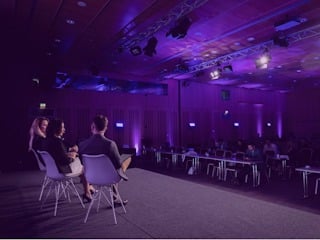Establishing an Emotional Link with the Help of Augmented Reality
Five years ago, nobody was even talking about the applications of augmented reality outside the tech industry. Within the industry, everybody was excited about the possibilities, but out in the real world, no one seemed to want to move forward. Then, all of a sudden, Pokémon Go came out in 2016—and with it, a perspective change with regards to augmented reality.
Any doubts surrounding consumer interest in AR were quickly swept away as over 500 million users downloaded the Pokémon Go app in the first year alone. Beyond the simple success of the app, Pokémon Go proved something else: the technology needed to create innovative AR experiences was already right there in our pockets. All it took was for the end user to download the app and give it access to their phone’s camera.
That being said, the simple fact that users had to install the app and allow third-party access to their personal data was a non-started for a great many potential customers. Even with the monumental success of Pokémon Go, the world just might not have been ready for the widespread adoption of AR.
Web-based AR Experiences
In the age of the modern smartphone, it’s now possible to deliver high-level AR experiences in a simple browser using a variety of web technologies. For example, QR codes are a tool that provide quick and easy access to web applications that are capable of generating content in augmented reality. Brands everywhere would benefit greatly from adopting them to take advantage of AR technology. These barcodes of the future have been widely misused in western countries due to inadequate application and odd cases where URLs were improperly maintained. However, with the rising popularity of apps like Snapchat and Venmo, users are being newly exposed to the innovative prowess of these creations.
As a result, Apple and a number of other mobile manufacturers quickly adapted and integrated a QR code reader into their product operating systems. This reader allows for simplified and efficient access to a given URL. The need to type in long, complicated URLs to access specific content is over. The simple explanation behind the integration of this technology is that everyone who owns a smart phone (roughly 96% of American adults, according to Pew Research) has access to a functioning QR code reader. By extension, these users also have access to AR experiences. In Asia, for example, QR codes are so common that their use is widespread in multiple countries for a multitude of different purposes.
Try Our AR POC For Yourself
QR codes, however, are a simple gateway to web applications that offer a variety of different AR experiences. Thanks to continued technological development, we’re able to display virtual 3D objects within a real-life environment. From there, we can generate a myriad of different interactions between our users and this given object via their phone or tablet. We should also mention the markers, represented by recognizable images, that your mobile device uses to generate visual or audio content based on a scanned object. Our Spyglass project is a perfect example of that. These visual cues used to trigger AR experiences are all ways to strengthen the emotional bond between the user and a given product. In the future, brands that focus on this experience, rather than their image, will fare much better within the market. With this conviction, we were able to create our own concept of AR on the web. By scanning a unique QR code, the user’s phone launches an AR experience. Users are then able to consult the variety of options linked to an article and interact with them—in this case, a jacket—under realistic lighting conditions. The experience allows them to manipulate the item safely in a digital environment—all without having to download a single application or provide any third-party access to personal data.
Imagine a world where you can go to your favourite store, scan a QR code on an article of clothing that catches your eye, and see it in all colours and variants? Now, imagine what it would be like if you could see that article of clothing under different light, or worn in a variety of different conditions. You’d be able to determine which of its features best fit your lifestyle. Then, after choosing the colour that best suits you, you’ll be able to see whether or not the store you’re in has that colour in stock. But good news! If it doesn’t, you can order and receive it in the time it takes to transfer that item from a neighboring store, or local warehouse. All this from the comfort and security of your own phone—without having to download a new app.
This is the direction the future is taking—especially in the context of a post COVID-19 world, where an experience like this can provide customers with the confidence to return to in-store shopping. It will allow retail staff to maintain their distance and eliminate the need to approach customers who have simple questions about whether or not certain items are in stock.
Now, more than ever before, the enhanced reality revolution is at the tips of our fingers.










